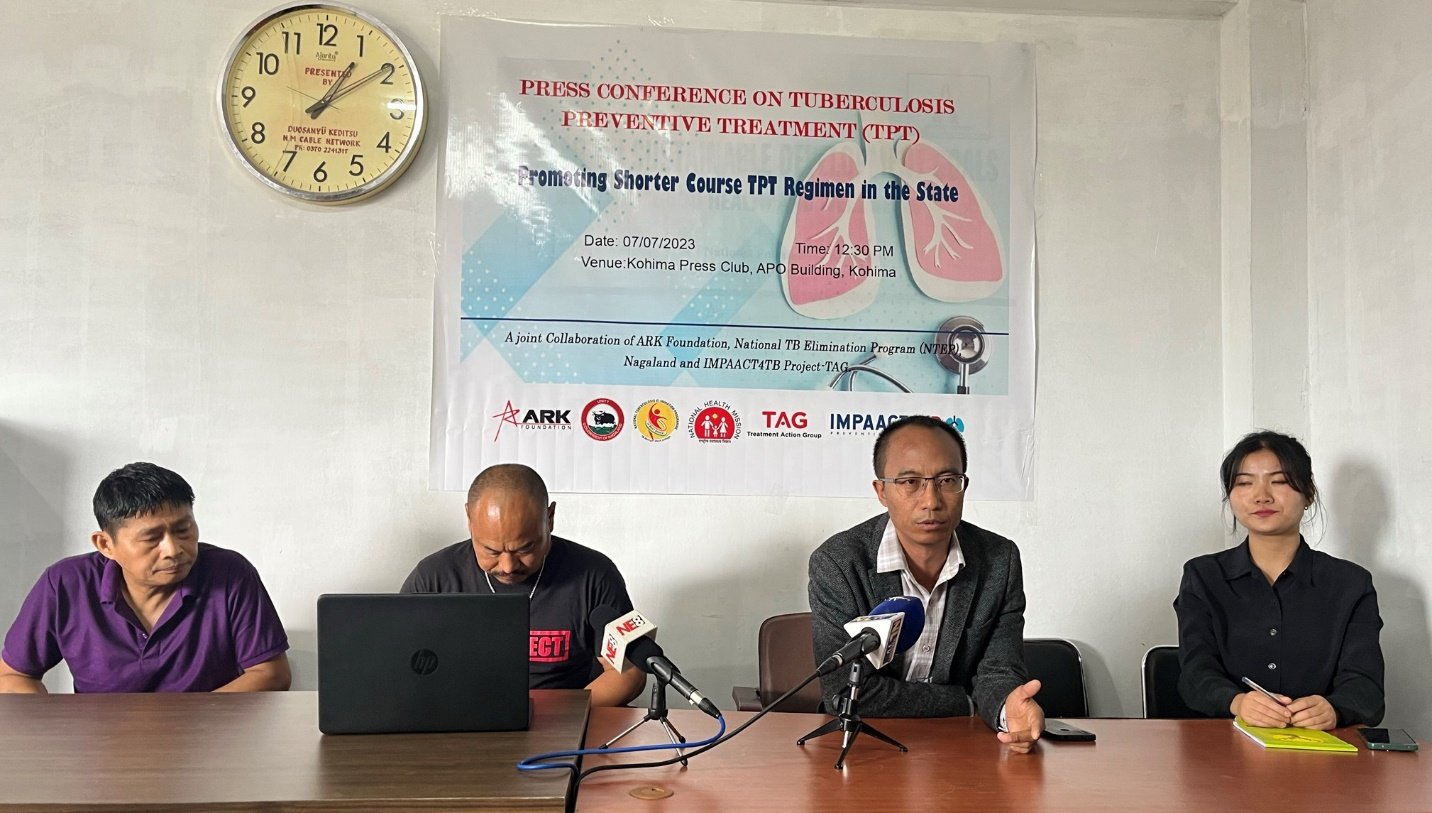Regimen in the State Tuberculosis Preventive Treatment (TPT), Promoting Shorter Course TPT Regimen in the State, was held at Kohima Press Club Office, APO building on Friday. The initiative is a joint collaboration of ARK foundation, National TB Elimination program (NTEP), Nagaland and IMPAACT4TB project-TAG.
Dr Chiben Kithan, District TB Centre, Ketholelie Angami from ARK foundation, Lanu Aier from NNP+ and Ruokuohielie Rutsa from Health & Family Welfare Department were the panellist of the day.
Download Nagaland Tribune app on Google Play

Latent Tuberculosis Infection (LTBI)
Dr Chiben Kithan expounded that “Latent Tuberculosis Infection (LTBI) is defined as a state of persistent immune response to stimulation by Mycobacterium tuberculosis antigens with no evidence of clinically manifest active TB.” This means that anyone can be infected with TB but remain in the LTBI stage without getting sick from active TB. However, Latent TB infection can progress to active disease when the body becomes weak, for example from disease, malnutrition, immune suppression, or advanced age. In people living with HIV, without good HIV treatment, the immune system becomes compromised and thus the person becomes more vulnerable to the progression of LTBI into active TB. As a result, there is a huge number of people affected by both HIV and TB
He said that there is a difference between TB infection and TB disease. During the stage of LTBI, the immune system is successful in containing TB and preventing disease. The TB bacilli remain encased in a hard shell, called a tubercle. Active TB disease refers to the time when TB is no longer contained by the immune system and causes disease. However, people can also progress directly to developing active disease without having a long latent period.
Tuberculosis Preventive Therapy or TPT and its various options
Ketholelie Angami said that LTBI is treatable through Tuberculosis Preventive Treatment or TPT. It is a treatment for preventing tuberculosis. It includes the administration of one or more anti-tuberculosis medicines for a certain duration. This treatment is given to only those household contacts who may have been exposed to the TB bacteria, and those who have low immunity due to existing conditions such as affected by HIV, diabetes, or silicosis, so as to prevent TB before it turns into a state of disease thereby making people sick.
The World Health Organisation indicates that isoniazid is the most widely used TPT regimen in the world; this is sometimes referred to as IPT, or isoniazid preventive therapy. Rifampicin and Rifapentine are the other two drugs that are important parts of TPT. When combined with isoniazid, rifampicin and rifapentine form so-called short-course TPT regimens that prevent TB in less time and with fewer side effects than the longer IPT regimen. Of these short-course regimens, the most commonly used is a 12-week regimen of rifapentine-isoniazid called 3HP.
However, 3HP is still not widely available under the TB program in India except for some few states.
In the absence of a broadly effective vaccine, preventive therapy is extremely important in TB prevention and control. Currently, WHO recommends preventive therapy in all: Childhood household contacts (under 5 years) of someone diagnosed with active TB disease, People with HIV as long as active TB disease has been ruled out.
The most common form of preventive therapy is Isoniazid Preventive Therapy (IPT).
Importance of TB prevention among PLHIV through TPT
Lanu, President, NNP+ explained that when a person contracts HIV, the first thing the doctors do is cure the TB and that is how important it is for us to be aware of TB. He also mentioned that we should all be aware of the preventions and cures of TB.
Tuberculosis, commonly known as TB, is a disease that most commonly affects the lungs caused by a bacterium called Mycobacterium tuberculosis (MTB). It is transmitted through the air when someone who is infected with TB coughs, sneezes, shouts, or sings. During such times tiny droplets of saliva containing thousands of TB bacilli get floated in the air and once inhaled, the droplets push their way into the lungs, settling in tiny air sacs (alveoli).
TB is NOT spread through touch, clothes, blood, sperm, vaginal fluids, food or liquids, sharing utensils, dust, dirt, or vehicle fumes.

